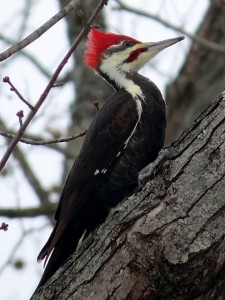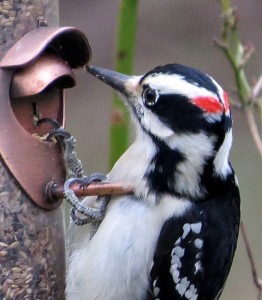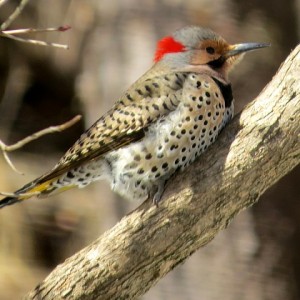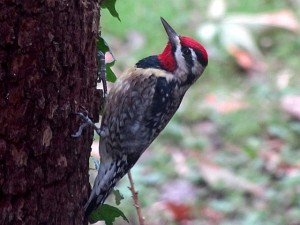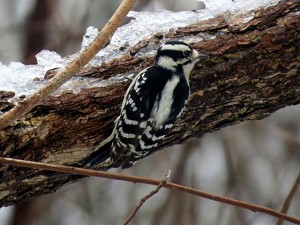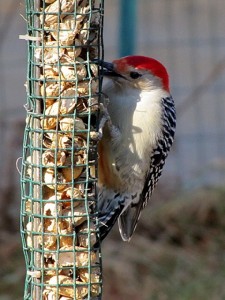Mariton: Woodpecker Revelation
by Tim Burris, Preserve Manager. Photos by Carole Mebus.
(Pileated Woodpecker)
Woodpeckers are making their presence known at Mariton. The males are getting randy and loudly proclaiming territory with “songs”, calls and drumming. I spent a lot of time thinking about woodpeckers as I took a walk through the forest this morning. I ended up with six species (Downy, Hairy, Red-bellied, Pileated, Flicker and Yellow-bellied Sapsucker). It was on my walk that I had the revelation that woodpeckers are an excellent entry into the world of birding for a number of reasons.
(Hairy Woodpecker)
1) They visit feeders. Downy and Red-Bellied Woodpeckers commonly visit feeders in people’s yards. (I also see Hairys, Flickers and Sapsuckers at Mariton’s feeders.) By watching them in your yard you can learn things like movement patterns, silhouettes, and even some calls. It is easy to start with woodpeckers because there are only a few species in our area.
(Northern Flicker)
2) They are noisy. As noted above, males are making a lot of noise right now. That makes this group of birds ideal for learning ear-hand-eye coordination. What I mean by that is that if you can locate the sound, then you can more easily locate the bird with your eyes. Then it is the matter of practicing bringing you binoculars up to where you are looking without losing the bird from view. Because the trees are bare of leaves right now, there are fewer obstructions.
(Yellow-bellied Sapsucker)
3) They are the right size. While they are still huge compared to Warblers, they are smaller than a lot of birds like Robins, Mourning Doves and Blue Jays. That makes finding them with binoculars a little more challenging (and more rewarding when you are successful). Their movements are easier to follow with binoculars than some of the smaller, faster moving species. So, again they help people learn how to use binoculars.
(Downy Woodpecker)
4) They are interesting. The fact that they bang their bills against trees is amazing enough, but they are fun to watch. Observing a Downy Woodpecker inspect tree bark for food is fascinating. Watching a Red-bellied woodpecker excavate a nest cavity is awesome.
(Red-bellied Woodpecker)
5) Stepping stones. If you are studying woodpeckers in early spring you are likely to bump into other interesting bird species. This morning on my walk I was also entertained by Chickadees, Titmice, White-breasted Nuthatches and Yellow-rumped Warblers.

